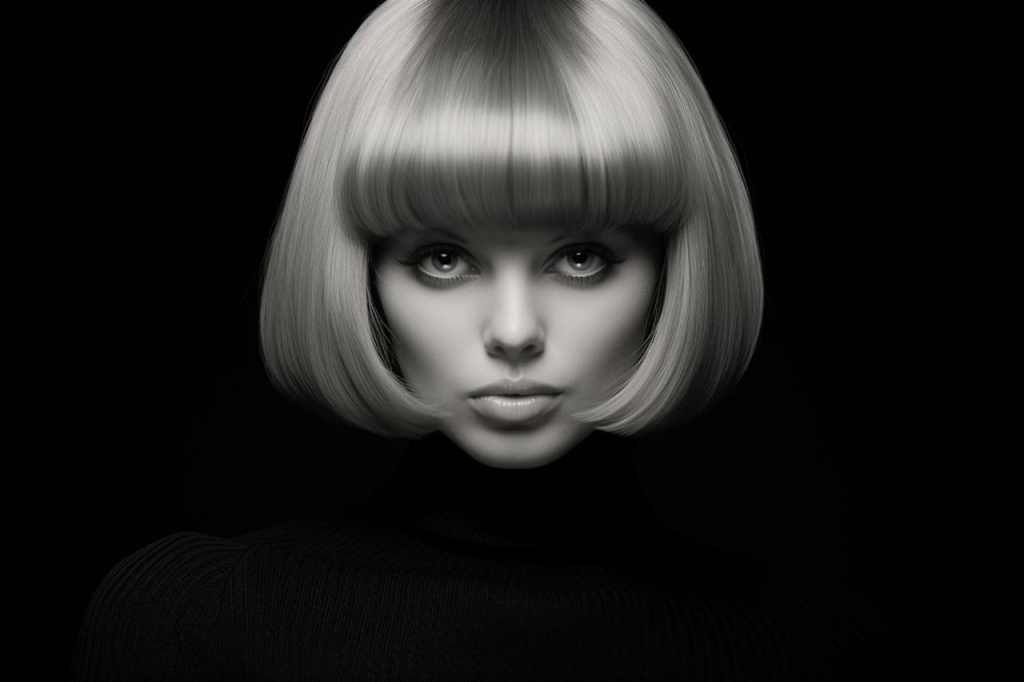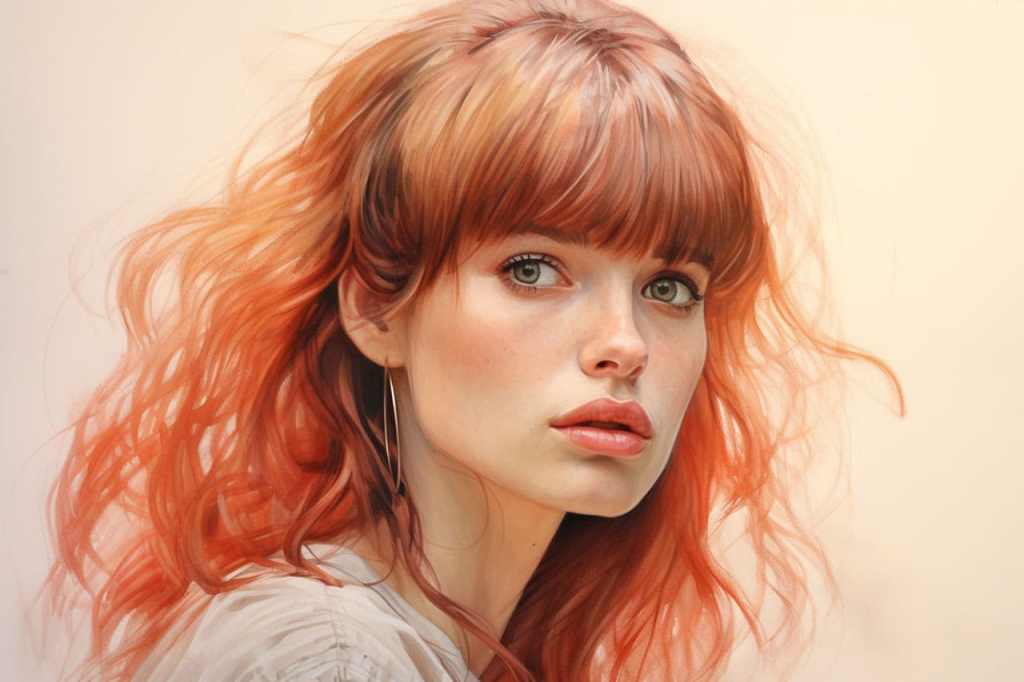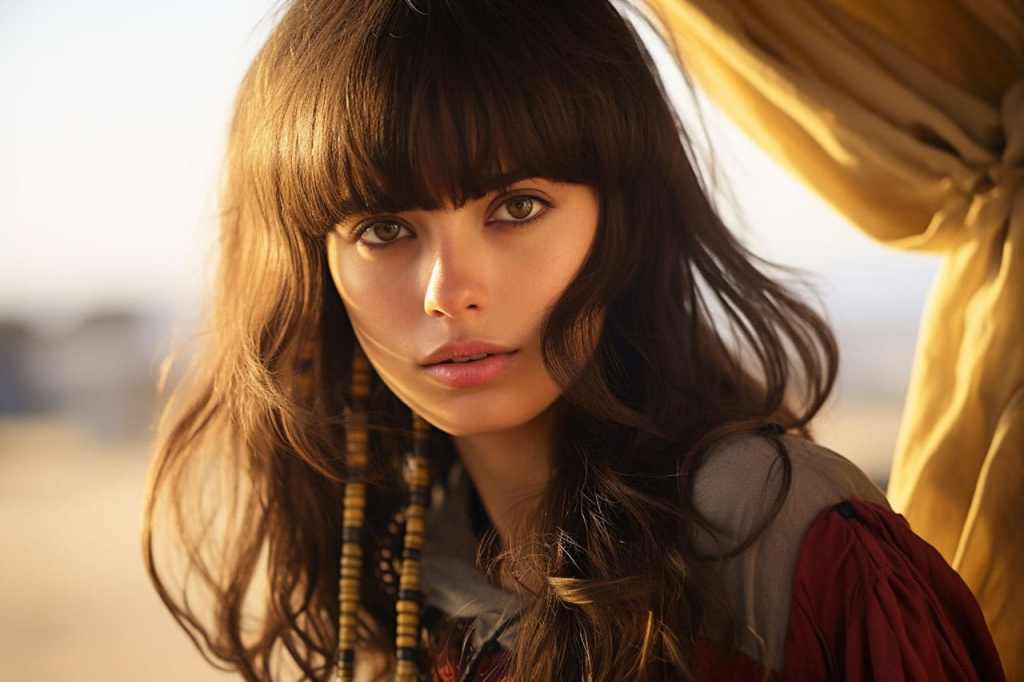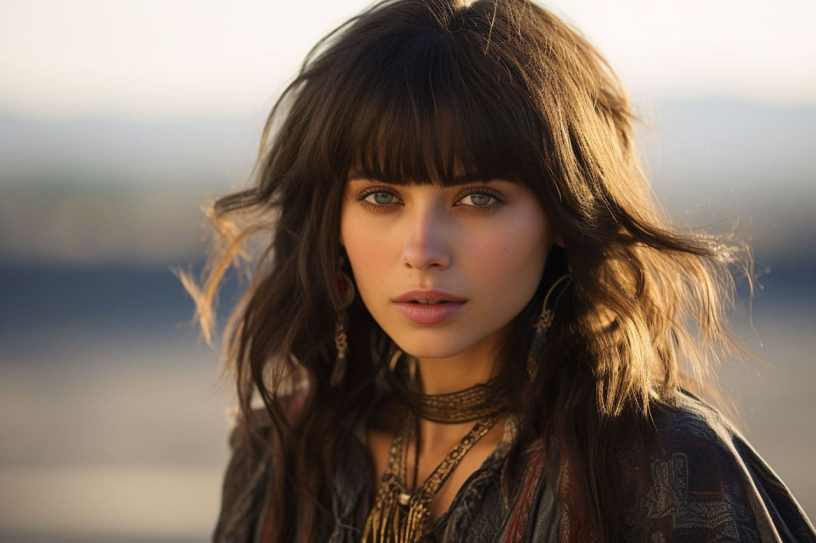The history of bangs (or “fringe” as it’s known in some parts of the world) is a long and varied one, having evolved through cultures and eras. Here’s a brief overview:
Ancient Times:
- Ancient Egypt: Many depictions of Egyptian art and mummies reveal hairstyles with a straight-cut or rounded fringe, suggesting that bangs may have been popular during this period.
Medieval Times:
- Europe: While many women during the medieval period wore their hair long without bangs, in certain portraits, one can find depictions of women with short wispy bangs.
Renaissance:
- Europe: Hairstyles were varied during the Renaissance, but the emphasis was often on high foreheads, sometimes even resulting in women plucking the front of their hairline to achieve this look. Bangs were less common.
19th Century:
- Victorian Era: Bangs became popular again during the late 19th century, especially toward the end of the Victorian era. They were often curled or frizzed and worn quite short.

20th Century:
- 1920s: With the rise of the flapper movement, bobbed hair with straight bangs became a symbol of modernity and women’s liberation.
- 1960s: The iconic “mod” look embraced thick, full bangs, popularized by fashion figures like Twiggy. By the end of the decade, the “hippie” movement embraced more natural, grown-out styles, but many still sported bangs.
- 1980s: Bangs saw a resurgence in popularity in the ’80s, with the rise of voluminous, often curly or teased styles. Think “mall bangs” or the poofy, large styles that often required a good amount of hairspray.
21st Century:
- 2000s: In the early 2000s, “side-swept” bangs became all the rage, offering a softer take on the look.
- 2010s: Bangs maintained their popularity and saw various adaptations from “baby bangs” (very short bangs) to the “curtain bangs” (split in the middle, framing the face).
- 2020s: Bangs continue to evolve with the times, reflecting various cultural and aesthetic influences. Social media platforms, like TikTok and Instagram, have been instrumental in popularizing and spreading different bang styles globally.

Throughout history, the bangs hairstyle has been more than just a trend—it’s also a cultural statement, reflective of broader societal norms, values, and changes. Whether worn as a symbol of rebellion, modernity, or just personal style, bangs remain a beloved and iconic hairstyle choice.

More about the bangs hairstyle
Types of Bangs Hairstyles
| Type of Bangs | Description |
|---|---|
| Straight-across | Cut straight across the forehead, often landing just above the eyebrows. |
| Side-swept | Longer bangs that are swept to one side, often blended into the rest of the hair. |
| Blunt | Thick, full bangs that have a straight, sharp edge, covering the entire forehead. |
| Wispy | Softer and thinner than blunt bangs; they give a more delicate, airy appearance. |
| Baby Bangs | Very short bangs that can be straight-across or wispy, typically above eyebrows. |
| Curtain Bangs | Parted in the middle and swept to each side, framing the face like curtains. |
| Choppy | Irregular, with varied lengths, offering a more edgy, textured look. |
| Brow-skimming | Soft bangs that lightly touch or just cover the eyebrows. |
| Arched | Bangs that are shorter in the center and longer towards the outer edges. |
| Textured | Bangs that have been thinned out and layered for a more dynamic, textured feel. |
